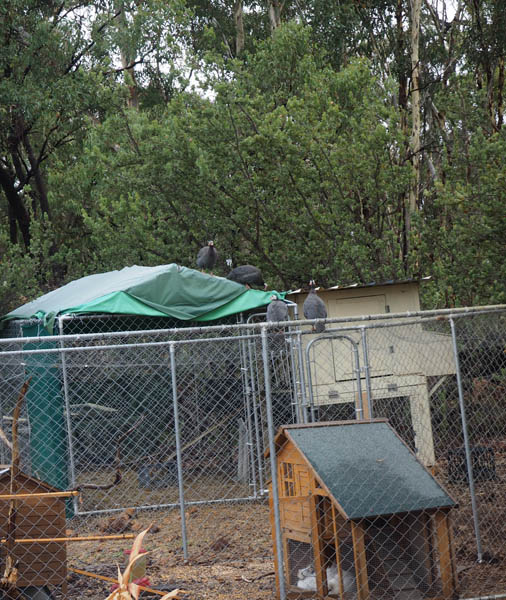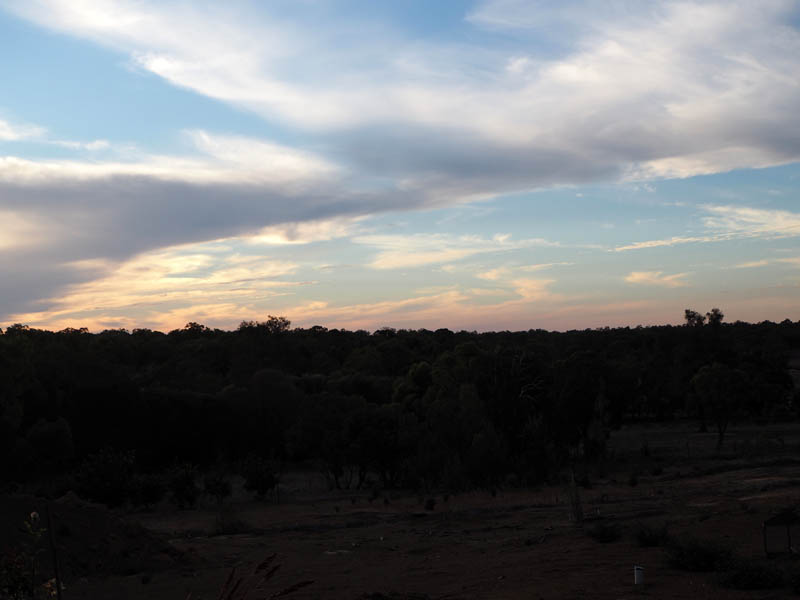Country living
My ears woke up before the rest of me yesterday, filled with the sounds of rain splatting on the tin roof. Big juicy drops bouncing and rolling, rushing down into the overflowing gutters, gushing out to form gullies in the dry sand. It was still to dark to see, but I heard it all. It was the best sound in the world to wake up to at the end of a hot, dry summer.
Cocooned inside my sleeping bag I wriggled back down, smiling in the silvery predawn. I’m spending the Easter break at Gallifrey, house-cat-fowl-and-plant sitting for Daughter Dearest. Although I knew I might have to trudge down to feed the chickens and guinea fowl in the drizzle later on, it’d only be a minor inconvenience. I couldn’t help feeling a bit like it was my birthday – with the rain an unexpected and glorious gift. The plants were being watered without any help from me and, even more importantly, at least some of the water I’ve used while I’ve been resident has been replaced.
Over the past few years I’ve come to realise how easy it is to take water for granted in our first-world city life. The simplest daily actions, such as washing one’s hands or rinsing a cup or flushing the toilet, are all done on the assumption that there’s a plentiful supply of water. But not just any water. We naively assume that it will be clean and bug free, i.e. potable water, and that it will be piped into our homes without fail. And it’s these assumptions that lead us to be blasé about our water use and to waste litres upon litres of this diminishing and most precious resource.
T and I try to be water-smart at home, using low flow shower heads, limiting the sprinkler time, keeping showers brief and checking for leaky taps regularly. So I was surprised to find Australians at the top of the list of per capita water consumers in the world, with a quarter of our daily water use (26%) literally going down the toilet.
Although modern water efficient toilets are required to use no more than 5.5 litres of water per flush, a standard flush toilet uses 12 litres (!) – every time it’s flushed. With an average of four flushes per person per day, that’s about 10,000 litres of water each of us is flushing away every year. That’s a whole lot of water, particularly (but not exclusively) if you rely on rainwater for all your water needs.
Knowing this is not the same as living it. I’ve found that as a (temporary) resident at Gallifrey I’ve become hyper-conscious about water use. I’m suddenly personally aware of the fact that there’s no scheme water on the property, that the house and garden are dependant on the water in the tanks and, when that runs low and rain doesn’t come, the remaining option is to purchase water and have it trucked in to fill them. An expensive undertaking.
Every time I turn a tap on, I think about the water tank levels. Every time I use the composting toilet, I’m conscious of the water that’s being saved. For a two-person household, this system is saving about 20,000 litres a year. That’s water that can then be used in the house and for the animals and orchard instead. A real, practical step to water management.
As water becomes scarcer, this system is becoming more mainstream. Instead of being seen as another ‘hippy-eco fringe’ idea, it’s gaining traction with the broader public. According to a recent ABC report, more people are looking at it as an option for new homes – and I know I certainly would.
Listening to the rain as I fell asleep last night, surrounded by the smells of rain and soaked earth, I was content.

